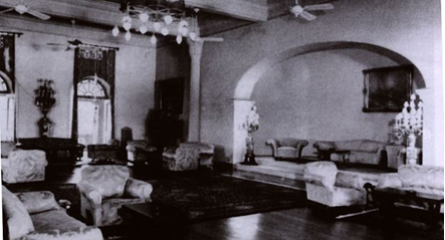
The College for Practicing Managers
India initially envisaged the creation of Administrative Staff College in Britain, during 1945-48. This process received a new impetus with the creative and perceptive article written by Sir Hector Hetherington, one of Henley’s original Governors, for ‘The Times’ in 1945. Shri S M Gupta, the Deputy Educational Adviser to the Government of India, in 1947, wrote to Mr. Noel Hall, the then Principal of Henley referring to the Government of India’s interest and intent to commence its first session at Henley in March 1948.
In 1953, a committee of the All India Council for Technical Education recommended that an Administrative Staff College be established in India. This committee represented by both Government and Industry had its two joint secretaries visit Henley during the summer of 1953, one secretary for a month and the other for the whole of the Session 20.
In 1954, on his way back from a visit to Australia and New Zealand, Mr. Hall paid a brief visit to Delhi, as a guest of the Government of India, and attended meetings of the Planning Committee, and subsequently of the Full Committee at which the decision to go ahead was taken. He also had a private conference with the Minister of Commerce, Shri T T Krishnamachari and the representatives in Delhi of the Tata and other industrial groups.
In 1956, the first Court of Governors (CoG) was constituted. The 18-member CoG, under the chairmanship of Dr. John Matthai, a former Union Finance Minister, included several senior civil servants and leaders from the business and academic communities. As it was decided to establish the College in Hyderabad, the campus of Bella Vista, the erstwhile palace of the Prince of Berar, was made available.
On 18 May 1956, Administrative Staff College of India (ASCI) was registered as a society under the Societies Registration Act. Gen.S.M.Shrinagesh was appointed as the first Principal of the College on retiring as Chief of the Army Staff. He took charge on 8 May 1957 after staying in Henley-on-Thames College, England, for six weeks to study the organisational set-up, method of work and details of courses, at the behest of the CoG. Academic activities started in 1957 on 6 December (celebrated each year as ASCI Foundation Day) in ASCI, which quickly became an institute of national importance with international standards.
Living up to the expectations of its founders, ASCI fueled the process of professionalizing management, by synergizing a symbiotic blend of management development (training), consultancy and research. This unique blend, coupled with information technology pursuit, is structured to develop strategic thinking, reformist leadership, and state-of-the-art skills among practicing managers in India and the developing world. Thus envisages to achieve competitive dominance by confronting existing and emerging challenges and effectively managing regulatory, government, commercial and non-commercial organisations.
In the early years, the College was visited by Shri Rajendra Prasad, President of India, Jawaharlal Nehru, Prime Minister of India, and a host of prominent personalities. Almost all Prime Ministers visited Bella Vista and praised the beauty of the place and quality of the training programs.
History of Bella Vista
Bella Vista is a royal palace of the Nizam built in the year 1910. Bella Vista is the Indo-European building standing on a 10-acre (40,000 m2) verdant campus. The building’s French architect christened it as Bella Vista, meaning beautiful sight since it overlooks the Hussain Sagar Lake.
It was in this palace that the heir apparent to the masnad (throne) of Hyderabad, Prince of Berar, Nawab Mir Himayat Ali Khan, Azam Jah Bahadur, the elder son of the Seventh Nizam, Mir Osman Ali Khan, stayed. The palace reportedly played host to all the dramatic events that typified the royalty of yore – luxuries with “women swarming all around”, intrigues, failed coups, shattered dreams and a disgusted princess leaving the palace in a huff with her children in tow.

A lot of modifications and additions were made to the original building that belonged to a judge. The first addition was when Sir Ali Imam, the Prime Minister was allotted the bungalow. When it was turned over to the Prince, it was refurbished and expanded, adding two tennis courts, a regular swimming pool for the Princess and “a baby pool” for the Prince who had a phobia for water. While the pool and tennis courts remain intact, the “baby pool” has made way for the library while a few more hostel buildings have come up, a little away from the main building.
The building still has parquet flooring in its major halls, earlier used as dance floors. One of them is now used as a dining hall and another, a lecture hall. Tree-lined manicured lawns on the rear side of the building lend a soothing effect to the campus. A feature of the campus is the air-raid shelter with an underground passage from the Prince’s room to the exit gate. Some classic photographs taken by Raja Deen Dayal now decorate the walls of deep corridors.The principal player of all the goings-on at Bella Vista, some of which left the Nizam red-faced, was Prince Azam Jah. “The Prince born to rule, became the Nizam who wasn’t and his frustration showed in all his actions,” recalls, Narendra Luther, former IAS officer and noted writer, who brought out an interesting booklet on the Prince and his stay at Bella Vista.
After the formation of Andhra Pradesh in 1956, Bella Vista became a State Guest House. A year later, it was sold to the ASCI and the journey of Bella Vista’s transformation began. In the lighter vein it is referred to as “the only college attached to a bar.”
The two-storeyed listed building is characterized by its sweeping semi-circular arches and perfect proportions. No permanent changes are made to its interiors and a concerted effort is made to retain the original character, a good enough reason for it to get the HUDA-INTACH award.